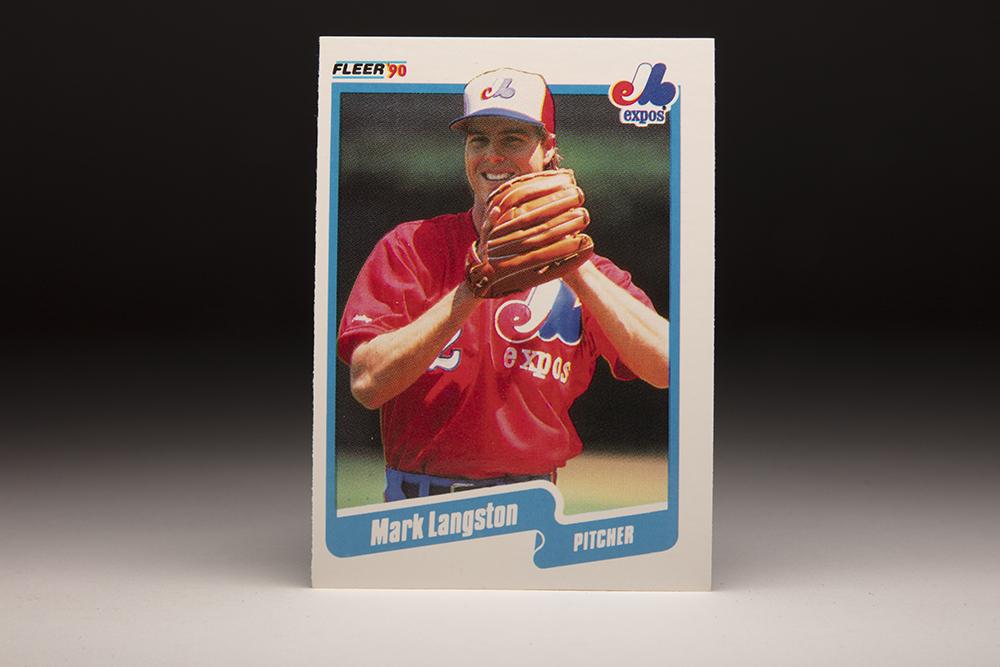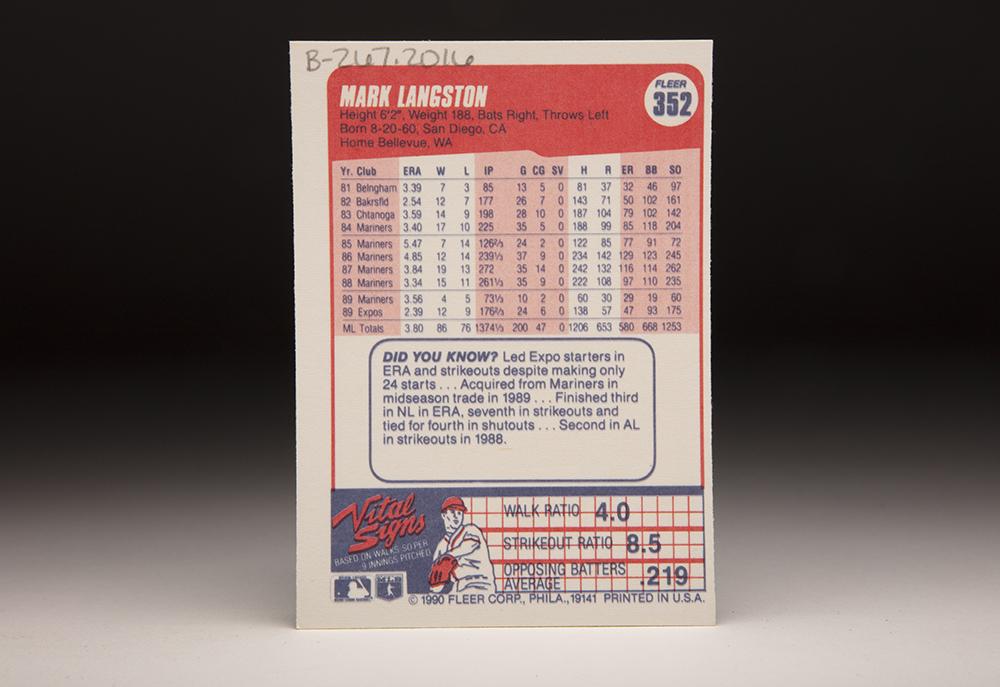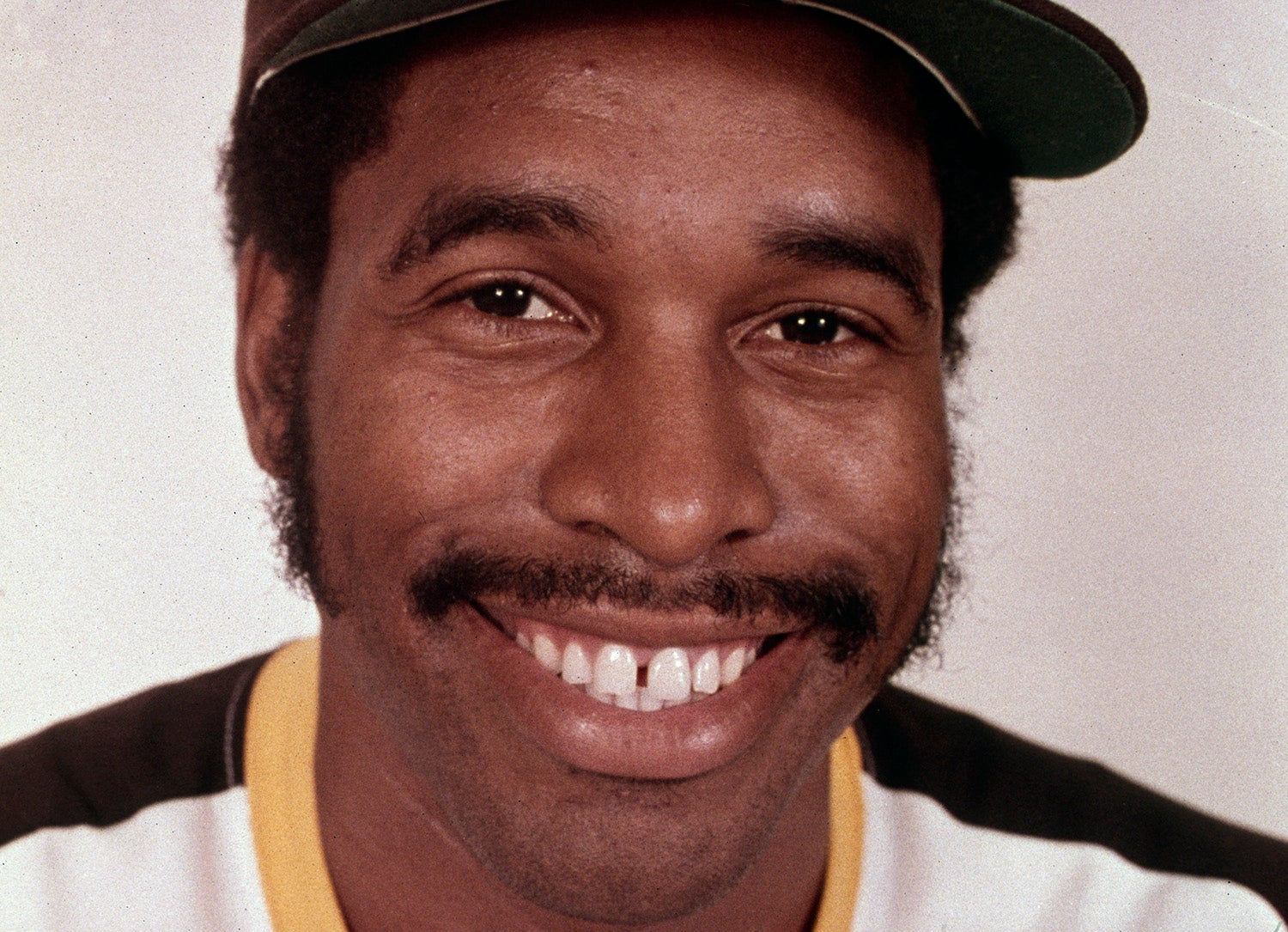- Home
- Our Stories
- #CardCorner: 1990 Fleer Mark Langston
#CardCorner: 1990 Fleer Mark Langston
In the 1990s, 10 different pitchers totaled 16 individual seasons with a WAR of 8.5 or better.
Mark Langston was the only one who did not lead his league in that category that year.
But while Kevin Appier overshadowed Langston in 1993, it could not detract from a standout career that saw Langston become one of the most dominant pitchers of his era – and, for a time, the highest-paid player in the game.
Born Aug 20, 1960, in San Diego, Langston starred for Santa Clara, Calif., Buchser High School as an outfielder and pitcher. He grew up a fan of Brooks Robinson and Johnny Bench, and had designs on being a shortstop until it became obvious that as a lefty he could not play that position.
Taught the slider in Little League, Langston paired the pitch with his dominant fastball as he slowly grew into his 6-foot-2 inch frame. He also starred on the soccer pitch and had offers to play both baseball and soccer in college.
Be A Part of Something Greater
There are a few ways our supporters stay involved, from membership and mission support to golf and donor experiences. The greatest moments in baseball history can’t be preserved without your help. Join us today.
Hall of Fame Membership
There is no simpler, and more essential, way to demonstrate your support than to sign on as a Museum Member.
“If soccer were as popular as baseball,” Langston told the Los Angeles Times Magazine in 1990, “I would definitely be playing soccer.”
Drafted in the 15th round by the Cubs in 1978, Langston opted to enroll at San Jose State, where he became an all-star for the Spartans. Eligible for the draft again in 1981, Langston signed with the Mariners after being selected in the second round. He reported to Bellingham of the Northwest League where he went 7-3 with a 3.39 ERA in 13 starts, cementing his reputation as a prospect.
In 1982, Langston pitched for Class A Bakersfield of the California League, going 12-7 with a 2.54 ERA in 26 starts. In a poll of the California League managers at the end of the season, Langston was named the league’s best pitching prospect.
Assigned to Double-A Chattanooga in 1983, Langston was 14-9 with a 3.59 ERA. He issued more than 100 walks for the second straight season but offset that with 142 strikeouts. He also met his wife Michelle while pitching in Chattanooga, and the couple married in 1985.
In 1984, Langston made the Mariners Opening Day roster and debuted as the club’s No. 4 starter on April 7, picking up his first win after working seven innings against the Brewers and allowing just four hits and two runs.
“I’m going to go home and try to savor it,” Langston told the Associated Press of his victory. “(The coaching staff) told me to keep within myself; don’t overthrow the ball. It worked for me.”
With his plus fastball, Langston didn’t have to overthrow.
“We had him in the high 80s and low 90s,” Brewers manger Rene Lachemann told the AP. “And he was around the plate.”
After enduring some early season struggles, Langston recorded his first shutout in a 5-0 win over the White Sox on June 26, improving his record to 5-6. From that point, Langston went 12-4 with a 3.03 ERA over his final 18 starts.
In the season’s last game on Sept. 30, he fanned nine White Sox batters to finish the season with 204 Ks, beating out Toronto’s Dave Stieb by six strikeouts to win the AL crown. He became just the fourth rookie pitcher in AL history to record at least 200 strikeouts and his 17 wins set a new single-season record for Mariners’ pitchers.
“My only goal was to stick up here (in the major leagues) all year,” Langston told AP. “I guess I did it, huh?”
Langston, who also led all big league pitchers with 118 walks, finished second in the AL Rookie of the Year voting behind Mariners teammate Alvin Davis. The league hit just .230 against him, good for fourth place behind Dave Stieb (.221), Bert Blyleven (.224) and Mike Boddicker (.228).
“I think we’ve got the basic foundation now for a really good future,” Langston said. “I think if everybody turns into the players they should, we’ll be contenders next year.”
But the Mariners and Langston both took their lumps in 1985, as Seattle lost 88 games and Langston went 7-14 with a 5.47 ERA in 24 starts, walking 91 while striking out just 72. He emerged from his second start of the season with a sore arm and needed nearly the entire season to return to form.
The Mariners began the 1986 season with a record of 9-20, prompting the dismissal of manager Chuck Cottier in favor of future Hall of Famer Dick Williams. Langston returned to form with his ability miss bats by striking out 245 batters, tops in the AL. But he also led the majors with 129 earned runs allowed while going 12-14 with a 4.85 ERA.
In 1987, Langston was named the Mariners’ Opening Day starter, and Williams rode his ace to a 19-13 record with a 3.84 ERA, 14 complete games and an AL-best 262 strikeouts. Seattle won a franchise-best 78 games as Langston earned an All-Star Game berth, finished fifth in the AL Cy Young Award voting and won the first of seven career Gold Glove Awards – becoming the first Mariners player to earn a Gold Glove.
Expectations were again high for the Mariners in 1988, but Seattle began the season 23-33 before Williams – who clashed with some of his players, including Langston – was dismissed and replaced by Jim Snyder. The Mariners finished with 93 losses but Langston went 15-11 with a 3.34 ERA and 235 strikeouts over 261.1 innings. He also took home another Gold Glove Award – and he began to harness the competitive fire that sometimes drove him too hard.
“I’d get mad at myself for a stupid pitch, and it would eat me alive,” Langston told the Los Angeles Times Magazine. “I was a maniac. I paid for a door and a couple of walls. One time, I kicked my foot through a wall. I’m a very sore loser.”
With five full seasons under his belt, Langston was already the franchise’s all-time leader in wins and strikeouts. But with free agency approaching after the 1989 season, rumors began swirling in Spring Training that Langston would soon be traded.
A proposed deal that would have sent Langston, Jay Buhner and another minor leaguer to the Mets for a package that included Sid Fernandez, Howard Johnson, David West and Kevin Tapani fell through at the last minute.
“If you ask me, I think I’ll probably be traded,” Langston told the Spokane Chronicle. “I thought that (the Mets trade) was pretty much a done deal.”
Langston continued to negotiate with the Mariners, asking for a three-year deal after setting on a one-year, $1.3 million contract for 1989. He stated repeatedly that he enjoyed playing in Seattle but did not like the Kingdome.
“Some days there’d be 2,000 fans,” Langston said of his time at the Kingdome, “and you could hear every nasty remark they said.”
Following the 1988 season, Langston’s agent Arn Tellem let the Mariners know that Langston would require a contract similar to Bret Saberhagen’s deal with the Royals worth $8.9 million over three years. The Mariners balked at the price.
Langston was 4-5 with a 3.56 ERA over 10 starts when the Mariners executed a trade that would impact the franchise for a decade. On May 25, 1989, Seattle sent Langston and a player to be named later to the Expos in exchange for three pitchers: Gene Harris, Brian Holman and future Hall of Famer Randy Johnson.
Mariners general manager Woody Woodward told the media that Langston turned down a three-year, $7.1 million contract extension just before the trade was completed.
“We looked at a lot of packages, but we had to get pitching,” Woodward told the Associated Press.
The Expos, meanwhile, got a pitcher that many thought would lead them to a division title in 1989.
“It gives our players the sense,” Expos general manager Dave Dombrowski told AP, “that we’re going to try to win this thing.”
The Expos were 23-23 at the time of the trade – and finished the season at 81-81, 12 games back of the first-place Cubs in the National League East. Langston went 12-9 with a 2.39 ERA over 24 starts in Montreal, finishing the year 16-14 with a 2.74 ERA and 235 strikeouts. For the fourth time in six seasons, Langston led his league in strikeouts per nine innings pitched.
“The first game was the most nervous I’d ever been,” said Langston, who struck out 12 batters in his debut with Montreal. “It was a new league, and I was the hot property they had just traded for. It was more pressure than I’d ever felt.”
Now a free agent, Langston returned home to California when he signed a five-year, $16 million contract with the Angels that made him baseball’s highest-paid player. The total value of the deal surpassed the previous record of $13.6 million earned by Dave Winfield when he signed with the Yankees following the 1980 season.
“In my wildest dreams, I never thought I’d be in the situation I am now,” Langston told the Associated Press. “My main concern was to put myself in a situation with a competitive team, not just next year but also down the road.”
It was also his relationship with Angels owner Gene Autry that made California the best fit for Langston, who was hotly pursued by the Dodgers and Yankees.
“It was the Autrys we really fell for,” Langston told the Los Angeles Times magazine of his decision to sign with the Angels. “Gene and Jackie (Autry) made us feel comfortable.”
Langston struggled in his first season with the Angels, though he was part of history on April 11, 1990, when he teamed with Mike Witt to pitch the first combined no-hitter in the big leagues since 1976. But after Langston’s seven no-hit innings against the Mariners, he found himself with a 5-15 record in mid-August before rallying to finish the season at 10-17 with a 4.40 ERA in 33 starts.
“It’s very difficult to verbalize how difficult it is for Mark right now,” Angels manager Doug Rader told the Orange County Register in August. “(But) when it’s all over, we’re going to be very happy we signed Mark Langston. And he’s going to be worth every nickel we spent on him.”
Rader proved to be correct just a year later as Langston went 19-8 with a 3.00 ERA, earning his second All-Star Game berth and finishing sixth in the AL Cy Young Award voting. The Angels finished 81-81 in 1991 but fell back to 72-90 a year later as Langston went 13-14 with a 3.66 ERA.
In 1993, Langston was named to his fourth All-Star Game and earned the starting assignment for the AL. He finished the year with a 16-11 mark and a 3.20 ERA (seventh in the AL) over 256.1 innings (third in the AL). His 8.5 WAR ranked second among AL pitchers and third among all American League players behind only Appier (9.3) and Ken Griffey Jr. (8.8). On Feb. 24, 1994, Langston signed a three-year extension with the Angels worth $14 million that would carry him through the 1997 season. “I see this organization as one with the opportunity to do something positive,” Langston told the Associated Press following the announcement of his new deal. “I want to be here when we do.” But in each of the next three seasons, Langston’s ERA exceeded 4.63. He was 15-7 for an Angels team that won 78 games and finished in second place in the AL West in the strike-shortened 1995 campaign, topping the 200-inning mark for the 10th time and winning his seventh Gold Glove Award. But he went just 6-5 in 18 games in 1996 and made only nine starts a year later, battling knee and elbow issues. The Angels allowed Langston to leave as a free agent following the 1997 season, and he signed with the Padres on Jan. 7, 1998. Serving as a spot starter and reliever, Langston went 4-6 with a 5.86 ERA to help the Padres win the National League West title. Appearing in his first postseason action in the NLCS vs. the Braves, Langston worked three games out of the bullpen without allowing a run. In the World Series against the Yankees, Langston came out of the bullpen in Game 1 with the Padres trying to squelch a seventh-inning New York rally. With the bases loaded and Tino Martinez at the plate in a 5-5 game, Langston worked the count to 2-2 before throwing a fastball that seemed to be right down the middle of the plate at the knees. But umpire Rich Garcia called the pitch a ball. On the next offering, Martinez drove the ball deep to right field at Yankee Stadium for a grand slam. The Yankees would win the game 9-6 and sweep the series. Langston did not appear in Games 2, 3 or 4. “It was obviously a big pitch,” Langston told the Los Angeles Times of the non-strike call. “But I’ve been in plenty of situations where I’ve not had a call go my way and I know you have to push it aside and execute the next pitch. I didn’t and that was the difference in the game. I executed on 2-2 but not on 3-2.” The Padres resigned Langston following the season but released him on the eve of the 1999 season on March 31. Four days later, he signed with Cleveland and went 1-2 with a 5.25 ERA as primarily a long reliever for a team that scored 1,009 runs and finished first in the AL Central. Langston did not appear in the Indians’ five-game ALDS loss vs. Boston but re-signed with Cleveland following the season. But following a rough outing against the Royals in a March 19, 2000, Spring Training game, Langston announced his retirement. “I can look myself in the mirror and know that in 16 years I didn’t shortchange any aspect of my career,” Langston told the Akron Beacon Journal. “But it comes time for everyone, and this is mine. I talked to (Indians pitching coach) Dick Pole when I came off the field. He started hugging me, and all these emotions started to run through me.” Langston soon became the head baseball coach at Orange Lutheran High School in Orange, Calif., then returned to the Angels as a part-time radio analyst during the 2012 season before assuming a full-time role with play-by-play announcer Terry Smith in 2013. Over his big league career, Langston posted a record of 179-158 with 2,464 strikeouts and a 3.97 ERA. “Winning pitchers are winning pitchers, and it doesn’t matter if they win 11-5 or 2-1,” Mariners pitching coach Phil Regan told The Olympian in 1985. “They find a way to win. And that’s Mark Langston.”
Craig Muder is the director of communications for the National Baseball Hall of Fame and Museum
Related Stories
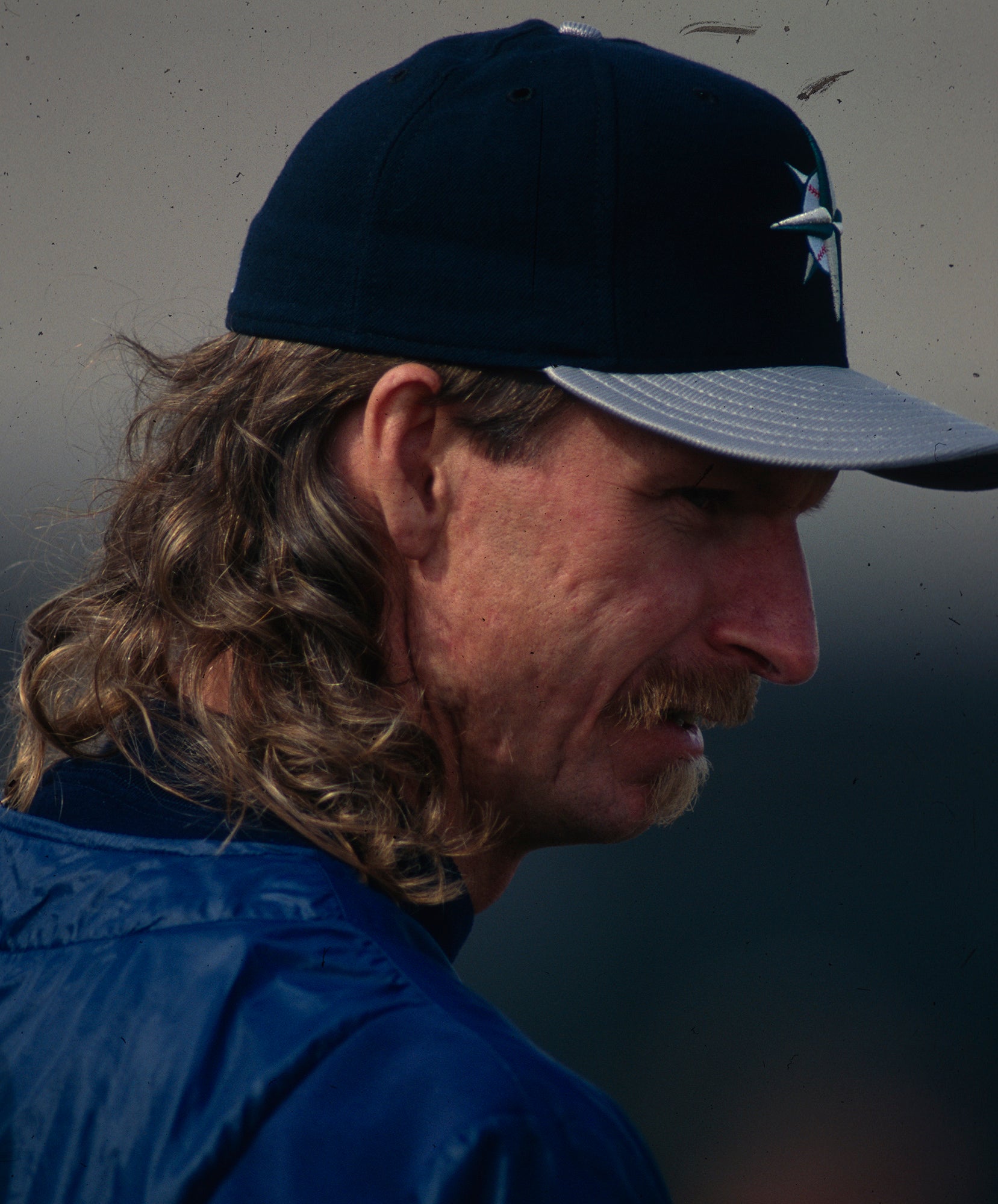
Trade to Mariners launches Johnson’s career
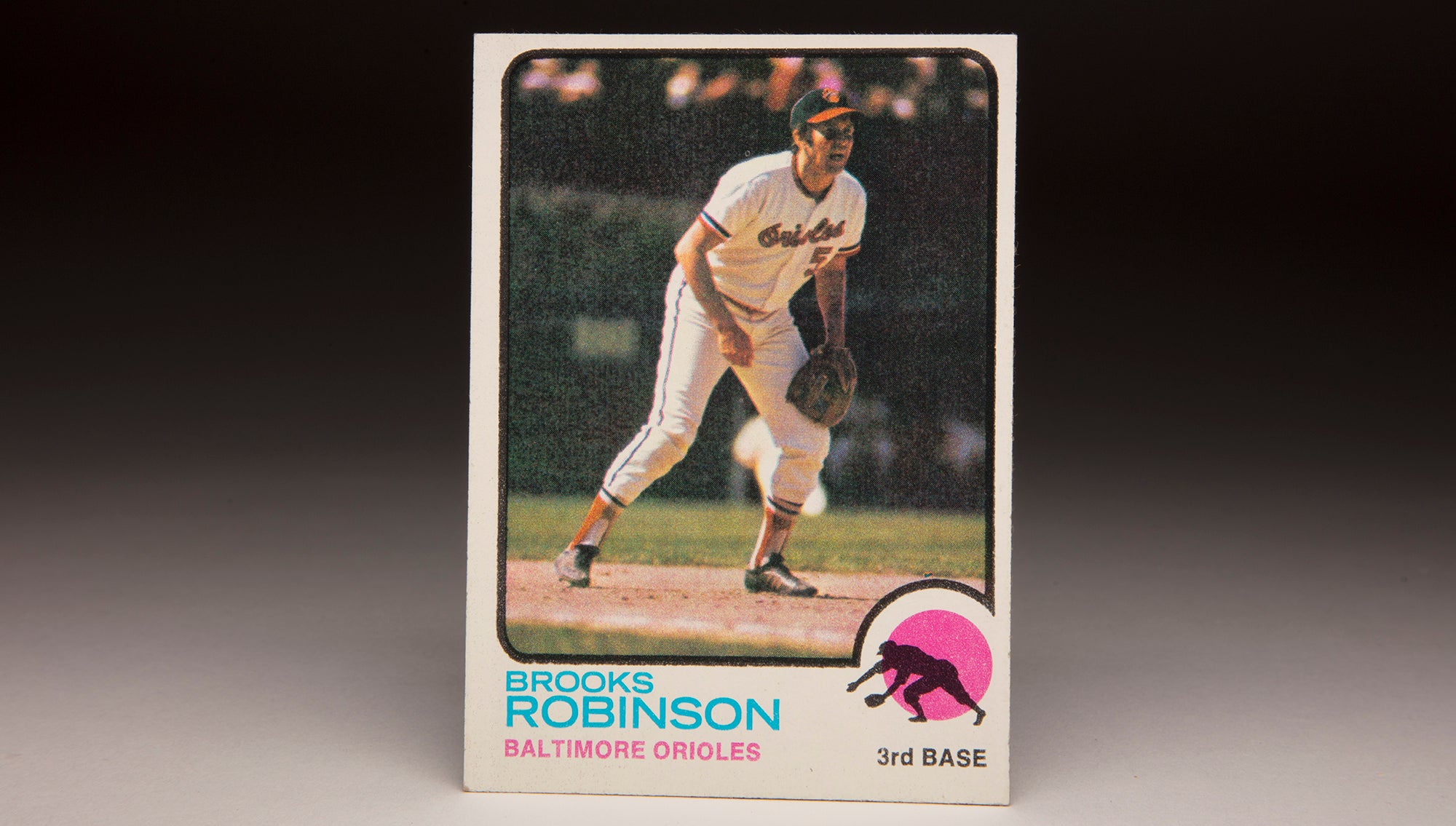
#CardCorner: 1973 Topps Brooks Robinson

#CardCorner: 1979 Topps Mike Norris
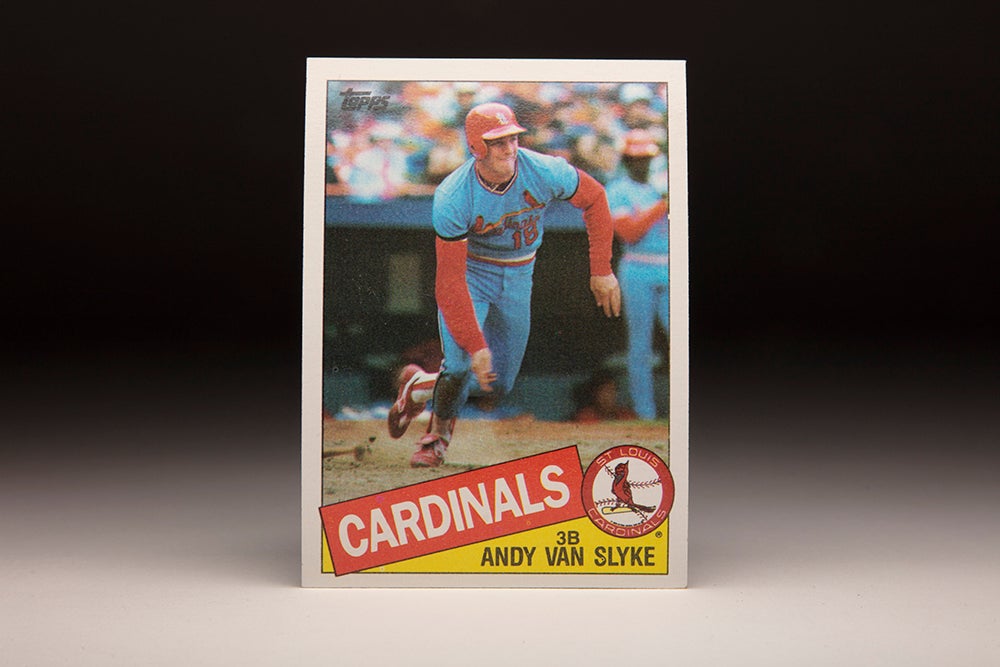
#CardCorner: 1985 Topps Andy Van Slyke

Trade to Mariners launches Johnson’s career

#CardCorner: 1973 Topps Brooks Robinson

#CardCorner: 1979 Topps Mike Norris



